
http://www.soybeansandcorn.com/Brazil-Crop-Cycles
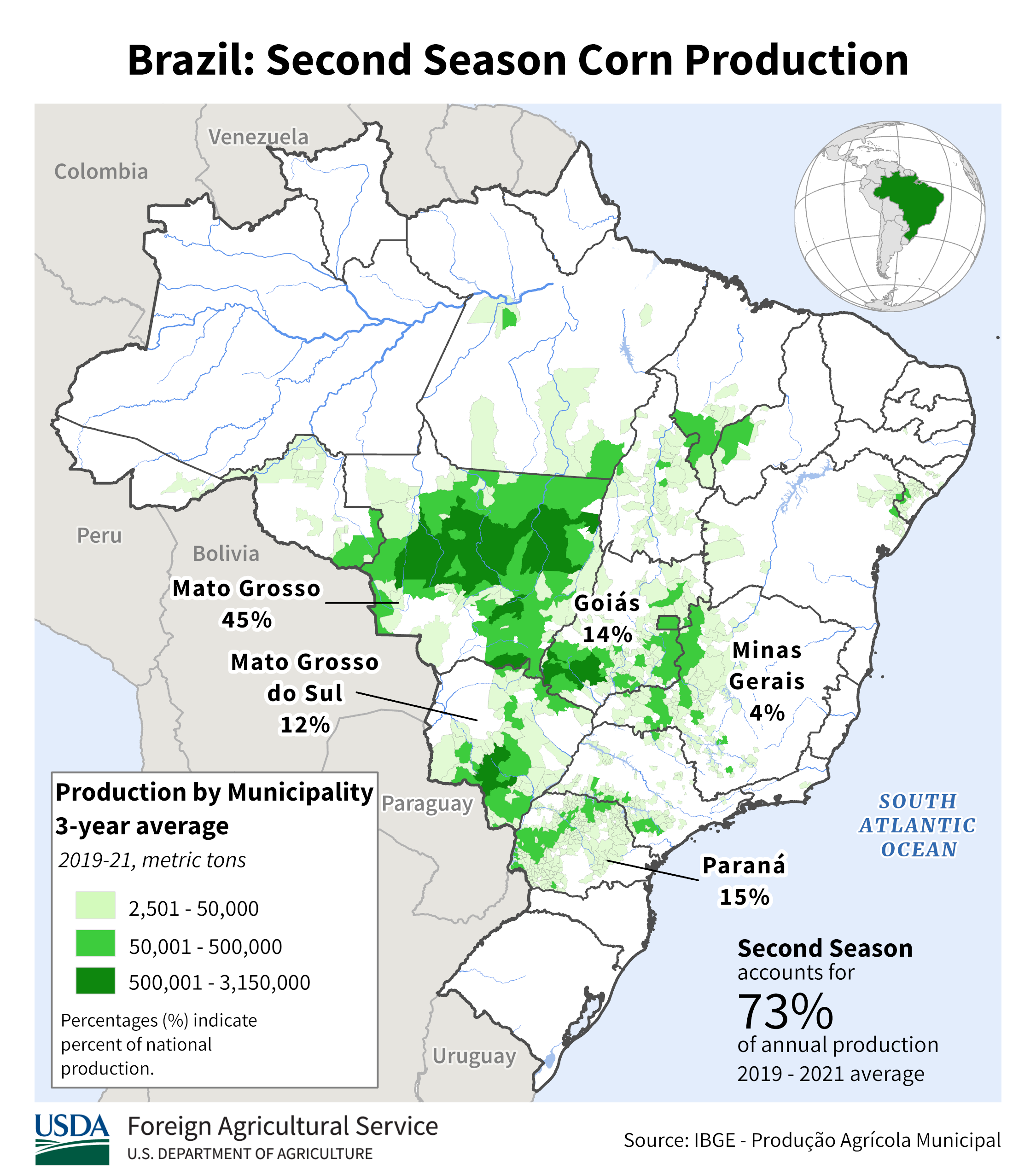
metmike: The corn crop was planted late(in March) of this year in Brazil (Mato Grosso) because the soybeans were planted late last year, which caused them to be harvested later than usual.
The rains are over in Central Brazil but that is normal and the crop is getting close to mature but still filling. ...... and especially in S.Brazil will still benefit from a late season rain.
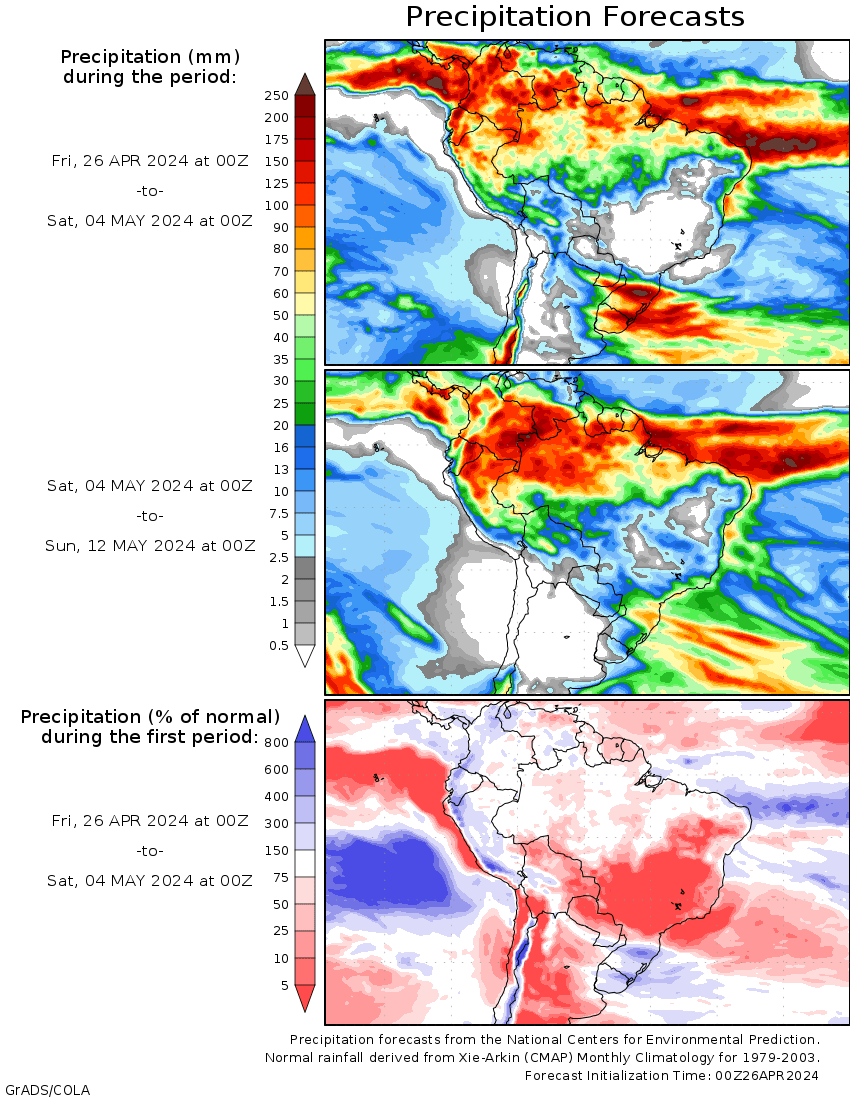
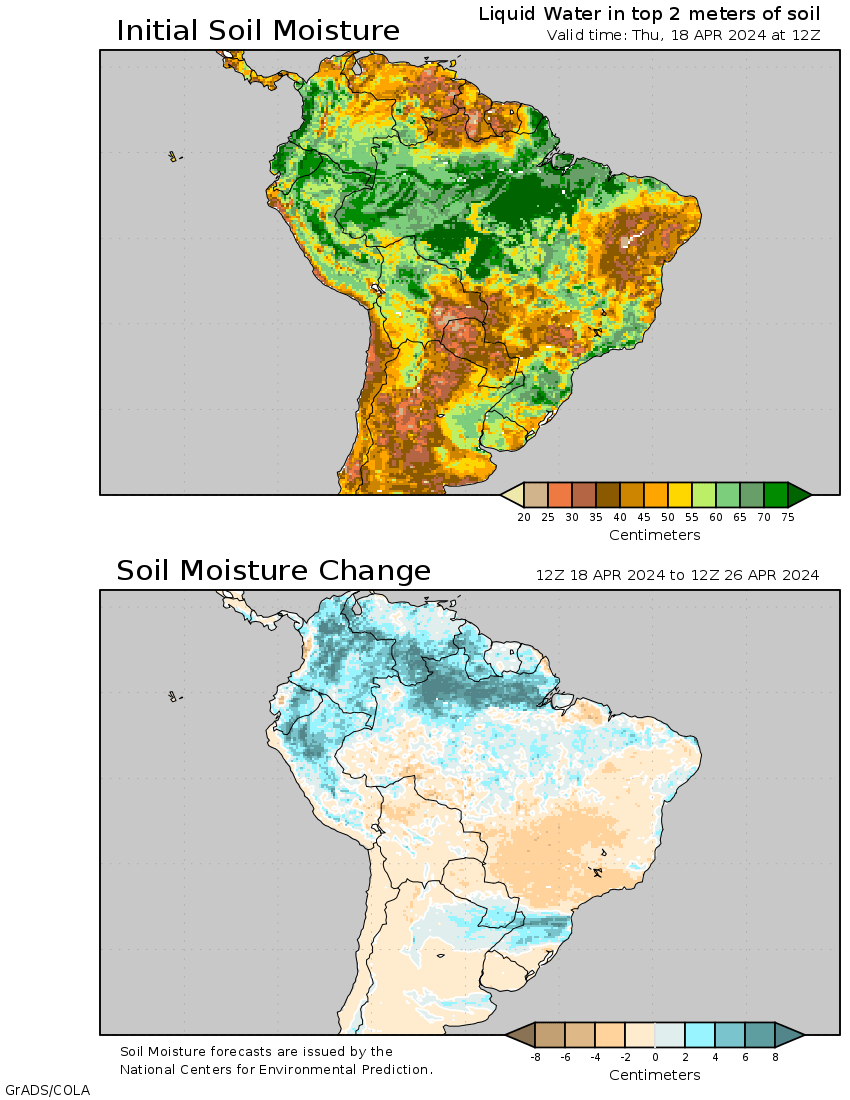
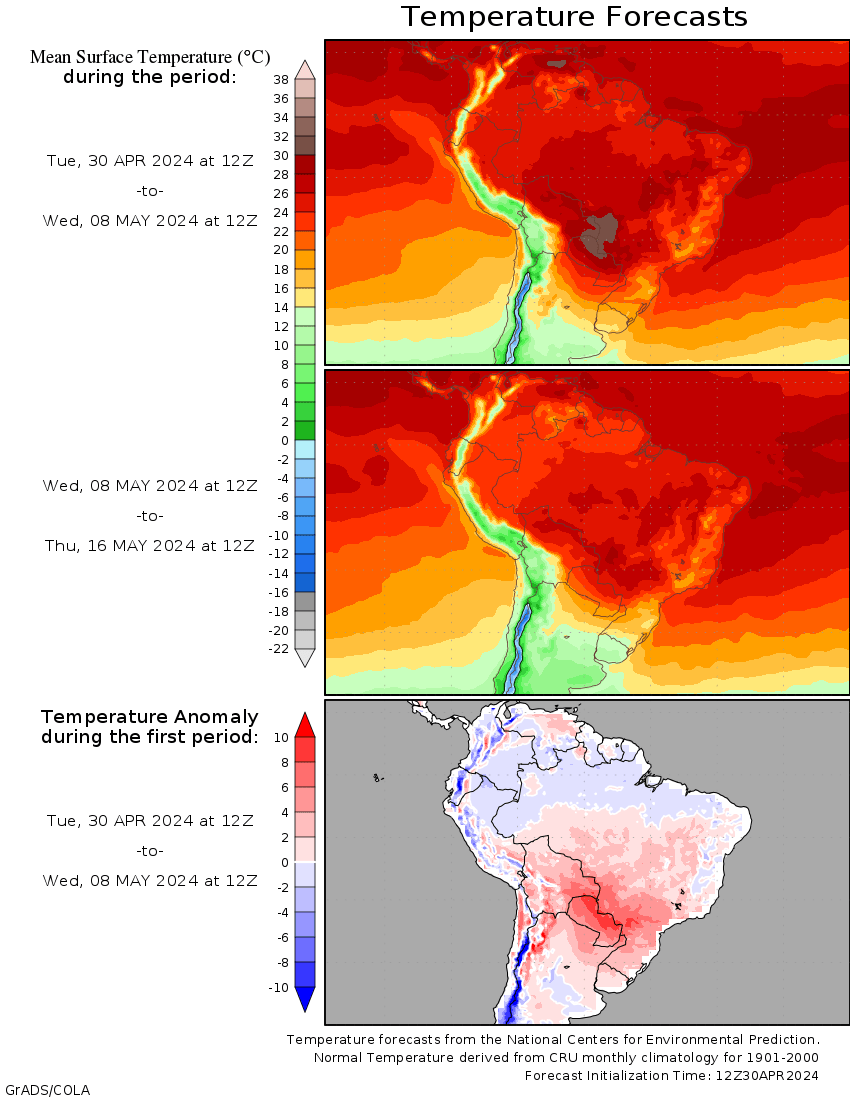
Dry weather continues to take a toll on the safrinha corn crop in south-central Brazil especially in the states of Parana and Mato Grosso do Sul. Parana is the second largest safrinha corn producing state in Brazil accounting for approximately 16% of the production and Mato Grosso do Sul is third with approximately 13% of the total.
The safrinha corn was planted much later than normal in Parana due to the delayed soybean harvest and now the summer rainy season is ending earlier than normal resulting in deteriorating conditions for the safrinha corn.
The Department of Rural Economics (Deral) now rates the safrinha corn in Parana as 27% poor, 45% average, and 28% good. The percentage of the crop rated good continues to decline on a weekly basis. A month ago, the percentage of the crop rated good was as high as 90%. The corn is 1% germinating/emerging, 52% in vegetative development, 32% pollinating, 12% filling grain, and 3% mature.
In parts of western Parana, the last significant rain was on March 16th and since then they have received only 6 mm of rainfall (0.2 inches). According to data from the company Geosys Brasil, the topsoil moisture in Parana is the driest in the last 30 years and the vegetative index for the safrinha corn is the lowest in the last 5 growing seasons. The soil moisture situation is similar in neighboring Mato Grosso do Sul as well. In their weekly bulletin, the Agriculture and Livestock Federation of Mato Grosso do Sul (Famasul) reported that only 13% of the safrinha corn in the state was rated in good condition. In the state of Goias in central Brazil, the soil moisture and vegetation index are also low, but as bad as the states further south. The condition of the crop in Goias will probably decline in the coming days because there is no rain in the forecast for the next 10-15 days. The state of Mato Grosso is the largest safrinha corn producing state in Brazil accounting for approximately 45% of the total production. The rainfall has been better in Mato Grosso, but, the crop conditions are quite variable in the state and the forecast is calling for below normal rainfall. The Mato Grosso Institute of Agricultural Economics (Imea) recently lowered their estimate of the statewide safrinha corn yield from 102.51 sacks per hectare (97.7 bu/ac) to 101.42 sacks per hectare (96.7 bu/ac).
http://www.soybeansandcorn.com/news/May6_21-Imea-Lowers-Safrinha-Corn-Yield-in-Mato-Grosso
http://www.soybeansandcorn.com/news/May5_21-202021-Brazilian-Safrinha-Corn-Another-Dry-Week
The maps below are for the past 30 days, 90 days and 180 days % of average precipitation.
It's been pretty dry for much of N. Argentina into S.Brazil!!!
https://www.cpc.ncep.noaa.gov/products/Precip_Monitoring/Figures/global/n.30day.figb.gif
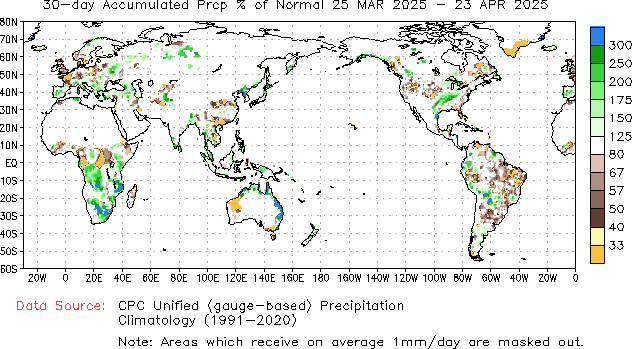
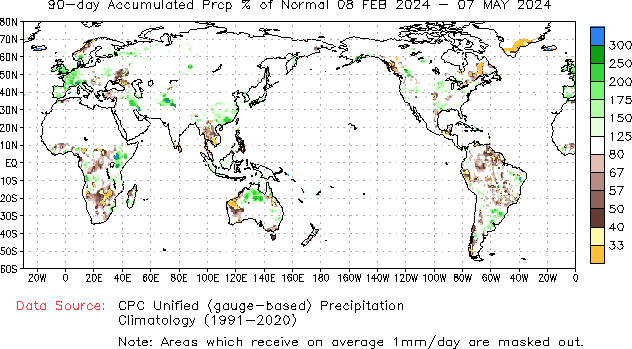
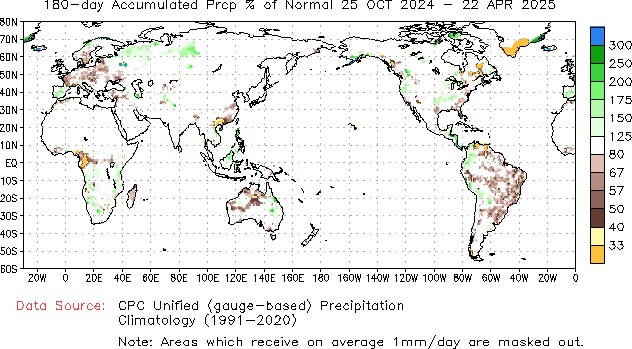
Rains increased a bit for S.Brazil but I think its too late to help much. The damage has already been done. Not sure how much more filling the late planted corn crop has left.
2 week rains below.
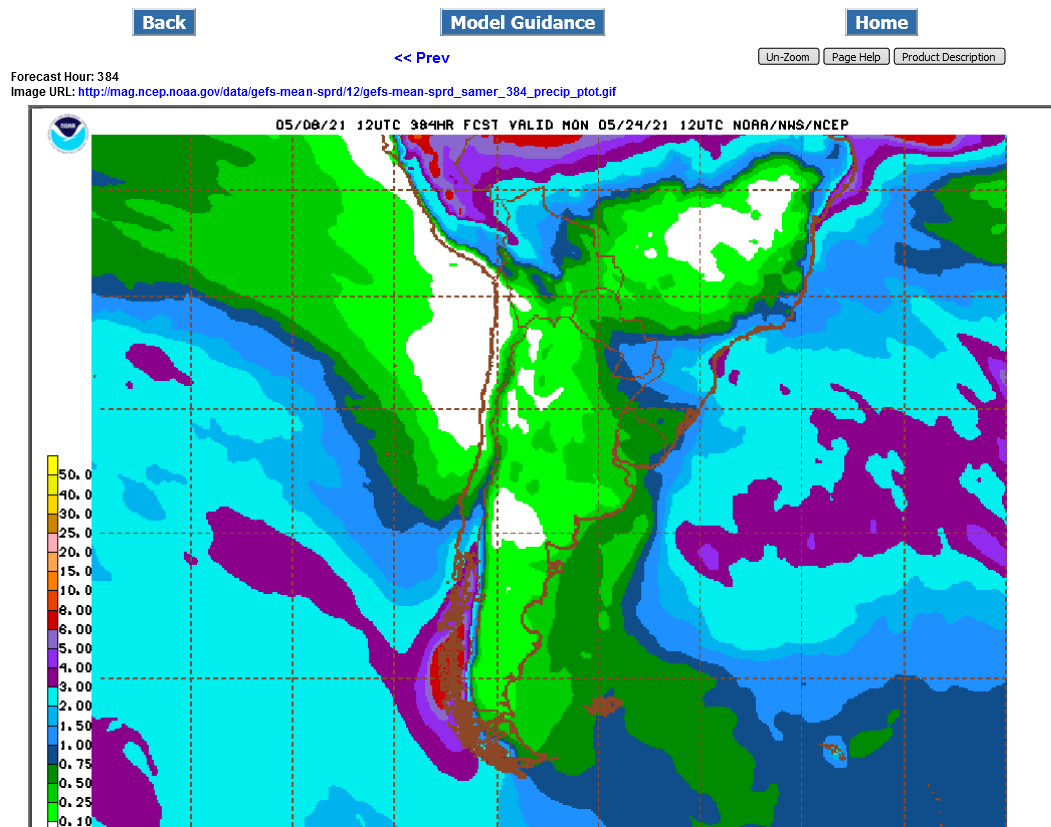
A bit less rain for S.Brazil(compared to yesterday) but its getting too late to matter much for the 2nd corn crop......the damage is already done.
